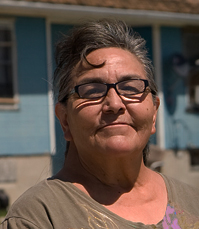|
|

 |
Known as a negotiator, Big Foot, or Spotted Elk as he was called among the Sioux, was the leader of the Miniconjou Sioux after the death of his father in 1874. He has the tragic distinction of being the leader of the group of Sioux who were gunned down by the Seventh Cavalry at Wounded Knee Creek in 1890.
In his early life he was known for using diplomacy to settle disputes between rival groups and his attempts to avoid war. During the 1870s he was allied with Sitting Bull and Crazy Horse, but saw no major action during the war in 1876-77. After the defeat of the Sioux he urged his followers to adapt to the white men’s ways while retaining their Lakota traditions. He settled on the Cheyenne River Reservation in South Dakota and was the first on the reservation to successfully harvest a corn crop. He traveled to Washington to lobby for a school to be built on the reservation.
By 1890 conditions on the reservations were so deplorable that many Sioux were on the edge of starvation. The government continued to take tribal land, agents often took money sent for food and supplies. Additionally, officials tried to eradicate Native American culture by forbidding the practice of traditional religion. Many of the Lakota turned to the “ghost dance” religion founded by Wovaka, a Paiute prophet. The religion taught that by praying to the Great Spirit, the Great Spirit would create a new world. The buffalo would return, Native American leaders would return to life and the whites would leave. Reservation rules forbade the practice of the religion.
Sitting Bull, who supported the movement, was arrested, and while he was being taken into custody he was killed. Big Foot did not support the ghost dance movement, but considered taking his community to reservation headquarters to surrender for their own safety. Before he could do this troops arrived and arrested them. Some of the Miniconjou fled, but soldiers recaptured them and took them to Wounded Knee Creek. Three days after Christmas in 1890 the Seventh Cavalry, five hundred strong, surrounded the 300 Sioux (and some accounts say Cheyenne as well) and began to disarm them. A gun went off and the troops began to fire on the Native Americans. Before it was over, more than 200 people, men, women, children, including Big Foot were killed. (see the Battle of Wounded Knee) |
|
|















